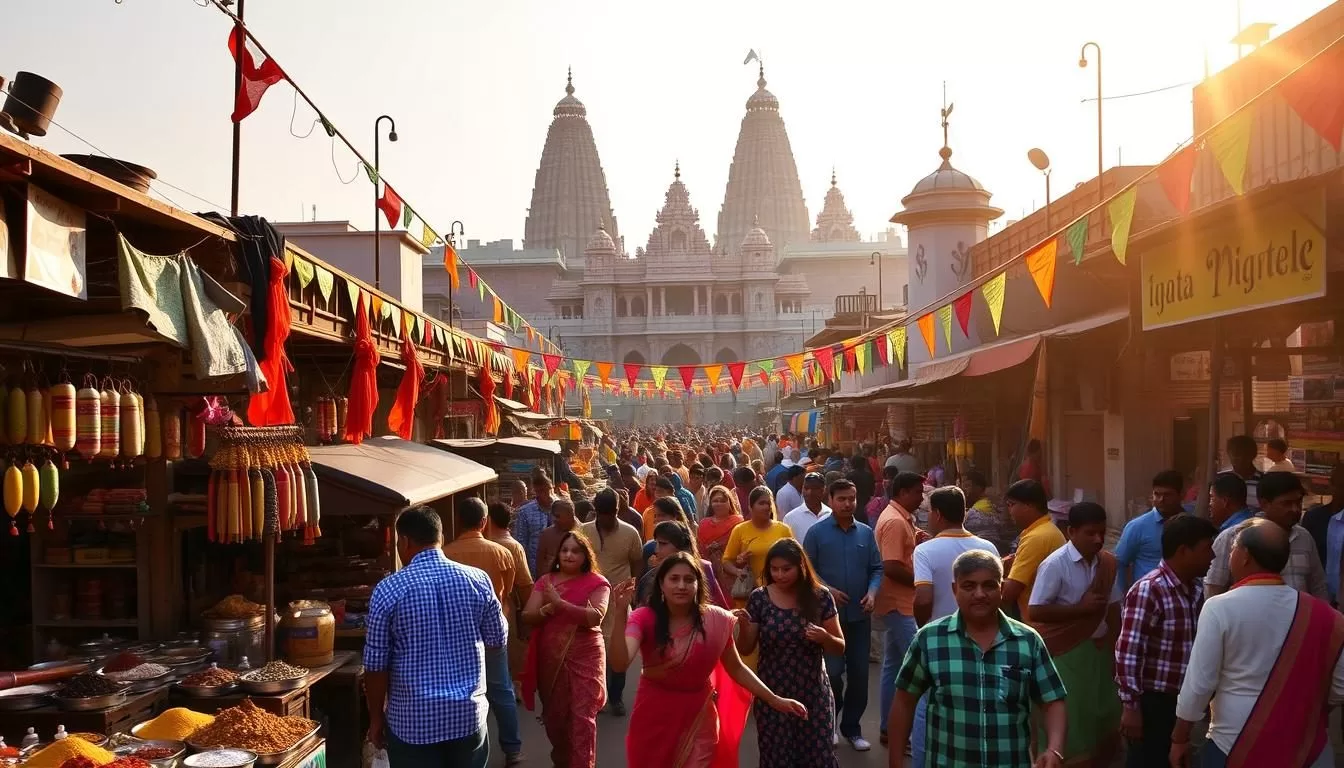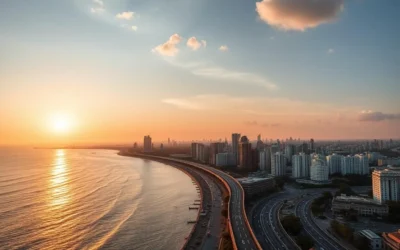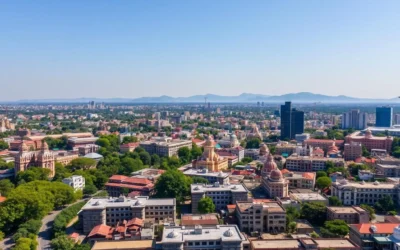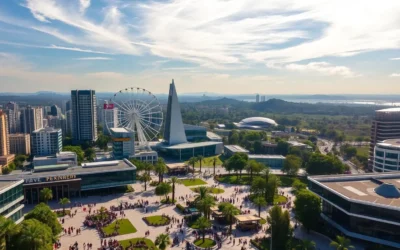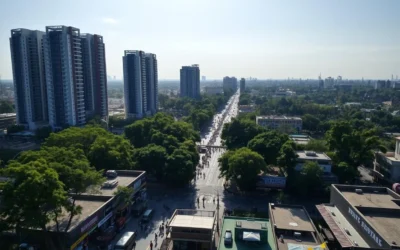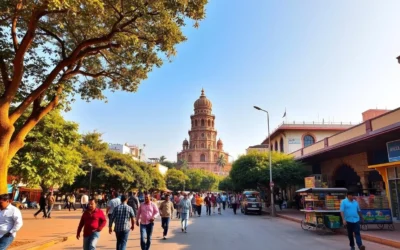✓ Accommodations✓ Flights✓ Rental Cars✓ Tours & Activities
Are you ready to immerse yourself in the rich cultural heritage of Maharashtra? This vibrant state is a treasure trove of history, culture, and festivals that showcase its unique traditions and heritage.
From the grand Ganesh Chaturthi processions in Mumbai to the colorful Holi celebrations, Maharashtra’s festivals offer you an authentic cultural experience. You’ll discover a year-round calendar of celebrations that range from massive city-wide events to intimate local traditions.
As you explore this culturally rich state, you’ll experience the perfect blend of religious devotion, cultural expression, and community celebration. Whether you’re planning your first trip or returning to explore more, this guide will help you time your visit to coincide with these extraordinary festivals.
The Cultural Tapestry of Maharashtra
The state of Maharashtra is a vibrant mosaic of cultures, traditions, and festivals. With its stunning landscapes dotted with ancient monuments and lively celebrations, Maharashtra is a treasure trove waiting to be explored.
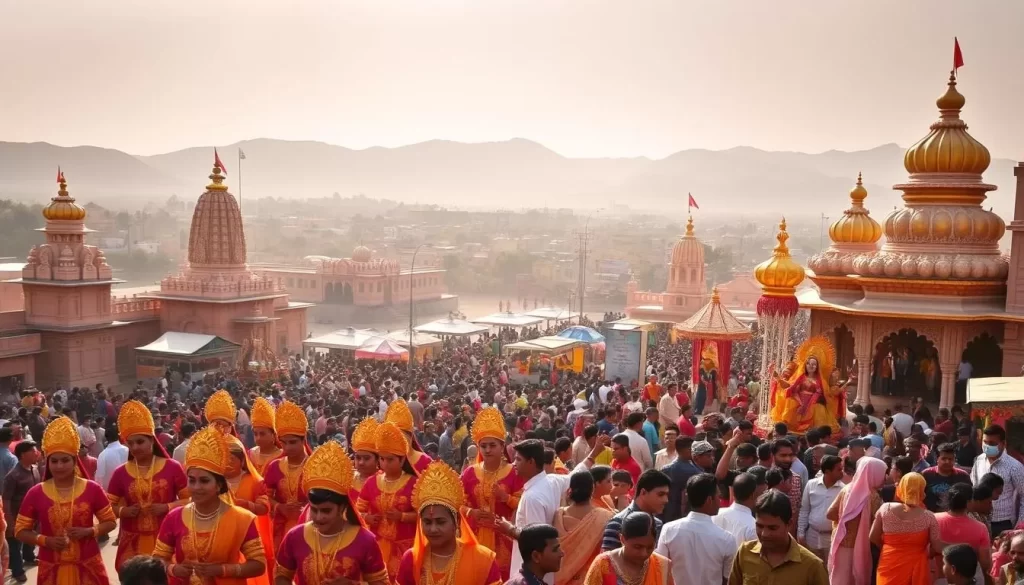
A Land of Diverse Celebrations
Maharashtra stands as a cultural melting pot where ancient traditions blend seamlessly with modern celebrations, creating a rich tapestry of festivals throughout the year. The state’s diverse religious and cultural heritage—including Hindu, Muslim, Buddhist, and Jain influences—has created a festival calendar that’s remarkably varied and vibrant.
Each region within Maharashtra has its own unique way of celebrating common festivals, giving you the opportunity to experience different variations of the same celebration as you travel through the state.
Why Festival Tourism in Maharashtra Is Special
The festivals of Maharashtra aren’t just religious observances—they’re community gatherings that bring together people from all walks of life, making them particularly special for visitors seeking authentic cultural experiences. Festival tourism in Maharashtra offers you a unique advantage: the chance to witness centuries-old traditions being practiced with the same fervor as they were generations ago.
Unlike many tourist destinations where celebrations might be commercialized, Maharashtra’s festivals remain deeply authentic, giving you a genuine glimpse into local life and culture. You’ll discover that participating in these festivals allows you to connect with locals in a way that ordinary tourism rarely permits, creating memories and friendships that last long after your visit.
Maharashtra, India: Top Festivals to Check Out When Visiting
Experience the best of Maharashtra’s culture by attending one of its many festivals, each with its unique charm and significance. Maharashtra’s cultural calendar is filled with numerous celebrations throughout the year, making it a great destination for festival tourism.
Festival Calendar Overview
Maharashtra’s festival calendar follows both the Gregorian and Hindu lunar calendars, which means celebration dates often shift from year to year. It’s essential to verify the exact dates before planning your trip to catch the festivals that interest you the most.
The state’s festival-rich period runs from August through January, with major celebrations like Ganesh Chaturthi, Navratri, and Diwali taking place during this time. You can experience multiple festival celebrations happening one after the other in different parts of the state.
- The most festival-rich period is from August to January.
- Some festivals like Ganesh Chaturthi transform entire cities.
- Spring brings special celebrations like Holi and Gudi Padwa.
Best Times of Year for Festival Tourism
The best times for festival tourism in Maharashtra depend on your interests. If you prefer grand public celebrations, plan your visit during Ganesh Chaturthi in September or Diwali in October/November. For a more intimate experience, consider visiting during Gudi Padwa, the Maharashtrian New Year, when families celebrate with traditional home rituals.
Consider the weather alongside the festival calendar—September through February offers the most pleasant climate for exploring, coinciding nicely with the major festival season. If you’re interested in experiencing multiple festivals in one trip, the period from August to November is ideal.
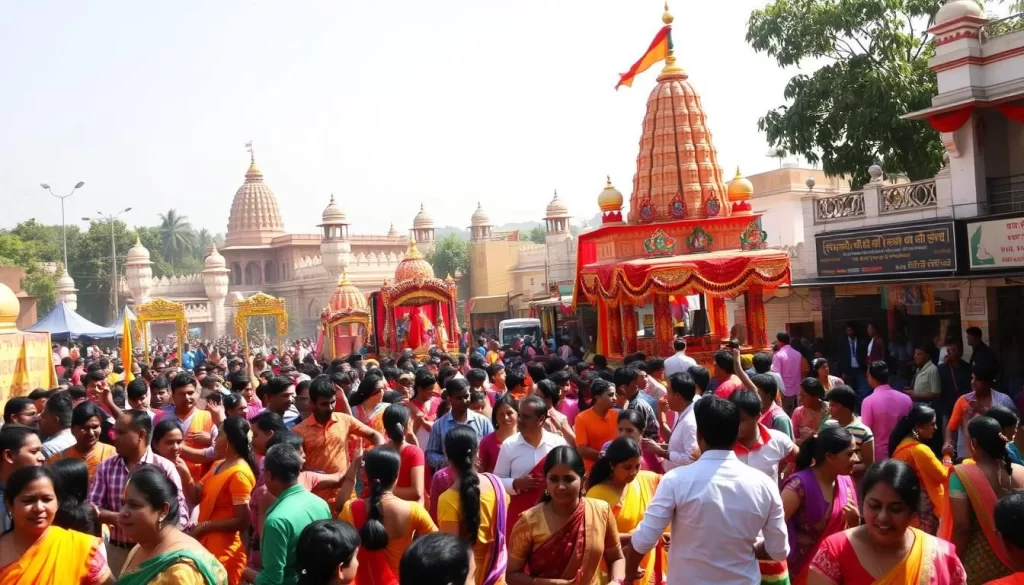
Ganesh Chaturthi: Maharashtra’s Most Beloved Festival
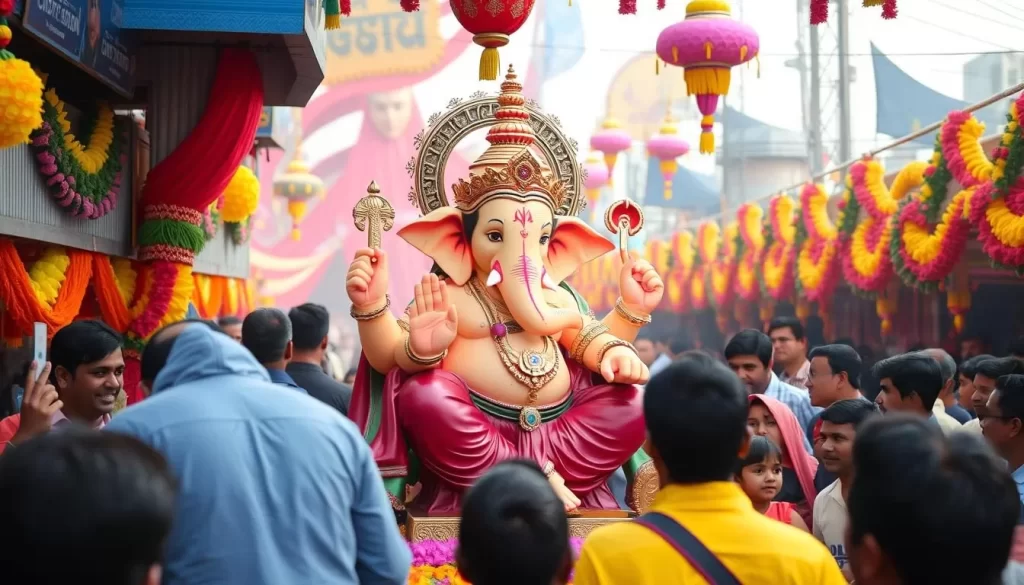
As the monsoon rains recede, Maharashtra bursts into a riot of color and sound with the arrival of Ganesh Chaturthi, a festival that honors the elephant-headed deity Lord Ganesha. This ten-day celebration is a time of joy, devotion, and community bonding, making it an unforgettable experience for visitors.
The Story Behind the Elephant-Headed God
The origin story of Lord Ganesha is both fascinating and deeply revered. According to Hindu mythology, Lord Shiva, Ganesha’s father, accidentally beheaded his son and later replaced his head with that of an elephant, thus creating the distinctive deity worshipped throughout India. This story symbolizes the themes of loss, redemption, and the remover of obstacles, which are central to the Ganesh Chaturthi celebrations.
Mumbai’s Spectacular Pandals and Processions
Mumbai transforms into a spectacular celebration zone during Ganesh Chaturthi, with thousands of beautifully crafted Ganesha idols installed in elaborate pandals throughout the city. You won’t want to miss visiting the famous Lalbaugcha Raja, one of the most revered Ganesh idols that attracts millions of devotees. The festival culminates in massive processions called Visarjan, where you’ll witness thousands of devotees dancing, singing, and chanting “Ganpati Bappa Morya” as they carry their community idols to the sea for immersion.
When and Where to Experience It
Ganesh Chaturthi typically takes place in September, and for the most authentic experience, plan your visit during this time. Stay for the full ten days if possible to witness both the installation ceremonies and the emotional farewell processions. Beyond Mumbai, you can experience unique regional variations of this festival in Pune and other smaller towns throughout Maharashtra.
Diwali: The Festival of Lights
Diwali, one of India’s most significant festivals, transforms Maharashtra into a vibrant spectacle of lights and celebrations. As you experience Diwali in Maharashtra, you’ll witness the state’s rich cultural heritage and traditions come alive.
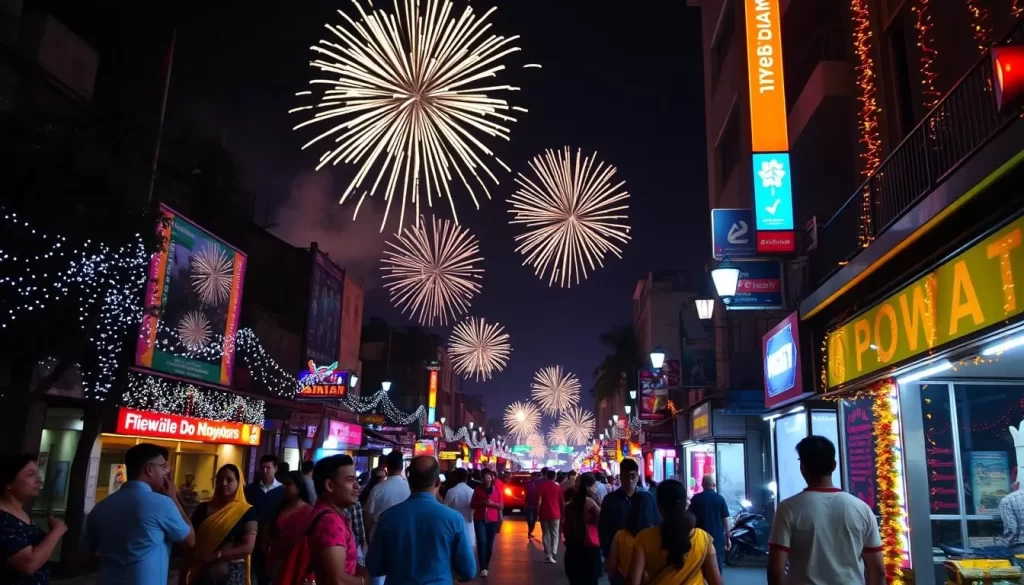
How Maharashtra Celebrates Diwali
Maharashtra celebrates Diwali with its unique traditions, including the creation of rangoli (colorful floor designs) outside homes and the worship of Goddess Lakshmi, believed to visit well-lit homes during this auspicious time. The festival spans five days, each with its own significance, from Dhanteras to Bhai Dooj, offering multiple opportunities to experience different aspects of the celebrations.
In Maharashtra’s cities, you’ll witness spectacular fireworks displays that light up the night sky, while in rural areas, you might experience more traditional celebrations centered around family gatherings and religious rituals.
Traditional Foods and Customs
Diwali in Maharashtra is a feast for your taste buds, with special foods prepared only during this festival, including chakli (spiral-shaped savory snacks), anarse (rice and jaggery cookies), and karanji (sweet dumplings filled with coconut and nuts). Families exchange gifts and sweets, visit relatives and friends, and participate in card games that are traditionally played during Diwali nights.
The lights of Diwali, including oil lamps, candles, and electric lights, transform cities and villages into magical landscapes of twinkling brilliance, making it a truly unforgettable experience.
Navratri and Durga Puja Celebrations

In Maharashtra, the nine nights of Navratri are a time of devotion, dance, and celebration. Navratri and Durga Puja represent two different yet related celebrations honoring the divine feminine energy.
Nine Nights of Dance and Devotion
During Navratri, you’ll witness nine nights of devotion to Goddess Durga in her various forms. Maharashtra’s Navratri celebrations blend devotional aspects with cultural entertainment, featuring traditional garba and dandiya raas dance performances.
Best Venues to Experience Garba and Dandiya
You can experience some of the most elaborate Navratri celebrations at venues like Shivaji Park in Mumbai and Deccan Gymkhana in Pune. Durga Puja celebrations in Maharashtra, particularly in areas with Bengali communities, have their own charm, with artistic pandals housing beautiful idols of Goddess Durga.
The Durga Puja festivities include cultural programs with traditional music, dance performances, and dramatic enactments. This blend of devotion and celebration makes Navratri and Durga Puja unique experiences in Maharashtra.
Gudi Padwa: Maharashtrian New Year
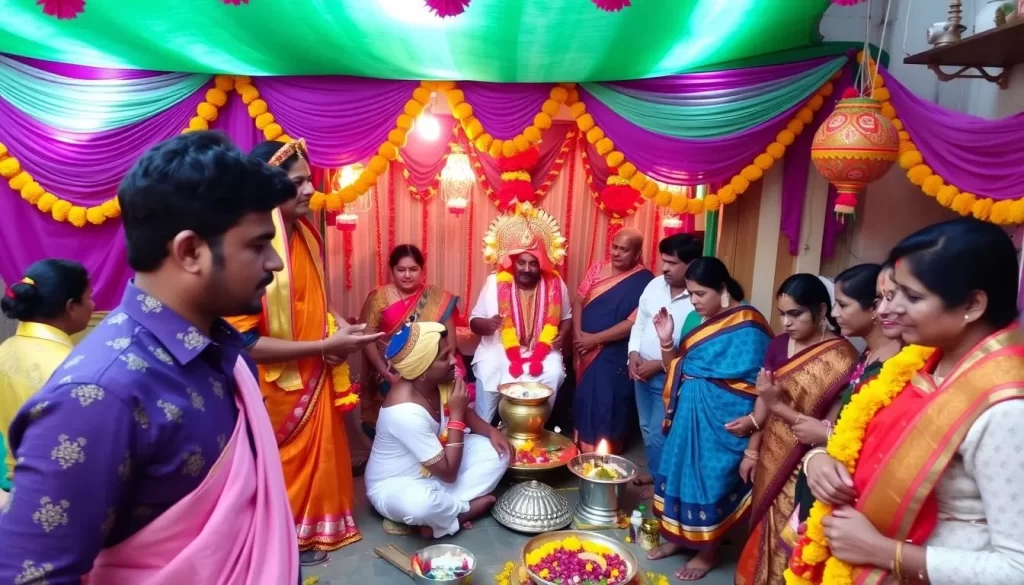
As you explore Maharashtra’s vibrant culture, you’ll discover Gudi Padwa, a significant festival marking the Maharashtrian New Year. This joyous occasion is a perfect blend of tradition, celebration, and community spirit.
The Significance of the Gudi
The Gudi, a decorated pole hoisted outside homes, is the most distinctive feature of this festival. It symbolizes victory, prosperity, and good fortune, commemorating Lord Rama’s return to Ayodhya. The Gudi is typically adorned with a bright yellow or green cloth, neem leaves, mango leaves, and sugar crystals, tied to a bamboo pole topped with an inverted copper or silver pot.
Traditional Celebrations and Processions
The morning of Gudi Padwa begins with ritual oil baths, followed by decorating homes with rangoli (colorful floor designs), and preparing special foods like shrikhand (sweetened yogurt) and puran poli (sweet flatbread). In cities like Pune and Mumbai, you can witness spectacular street processions featuring traditional dhol-tasha (drum) performances, folk dances, and participants dressed in traditional Maharashtrian attire, making it a memorable celebration of the New Year with rich traditions.
Holi: Colors and Joy in Maharashtra
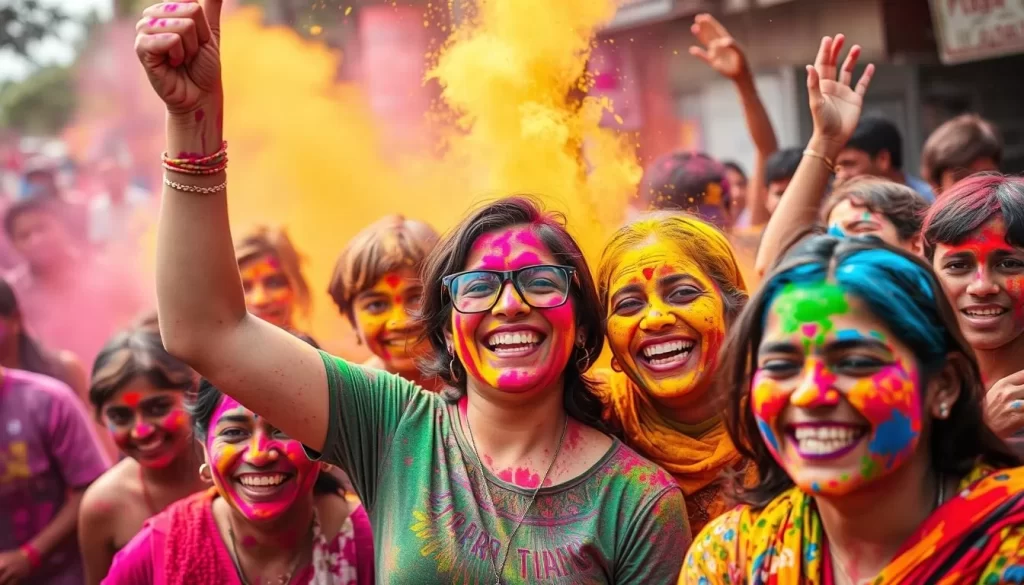
The festival of Holi is a kaleidoscope of colors in Maharashtra, symbolizing the triumph of good over evil. As you experience Holi, you’ll witness the state’s vibrant culture come alive with celebrations that are both joyous and meaningful.
Holi transforms Maharashtra into a colorful spectacle each spring, typically in March, when people of all ages take to the streets to celebrate this joyous festival marking the arrival of spring.
Unique Maharashtrian Holi Traditions
Maharashtra has its own unique traditions associated with Holi, including Rang Panchami, celebrated five days after Holi in some regions, and special folk performances that add local flavor to the celebrations.
In rural Maharashtra, you might witness the tradition of Shimga, where a bonfire is lit the night before Holi to symbolize the burning of evil, followed by singing folk songs and performing traditional dances around the fire.
Safe and Fun Ways to Participate
For a safe and enjoyable Holi experience in Maharashtra, consider attending organized festival celebrations at hotels or cultural centers in Mumbai or Pune, where natural colors are used and the environment is more controlled.
Protect yourself during Holi by applying coconut oil to your skin and hair before participating, wearing clothes you don’t mind getting stained, and using sunglasses to protect your eyes.
Makar Sankranti: The Harvest Festival
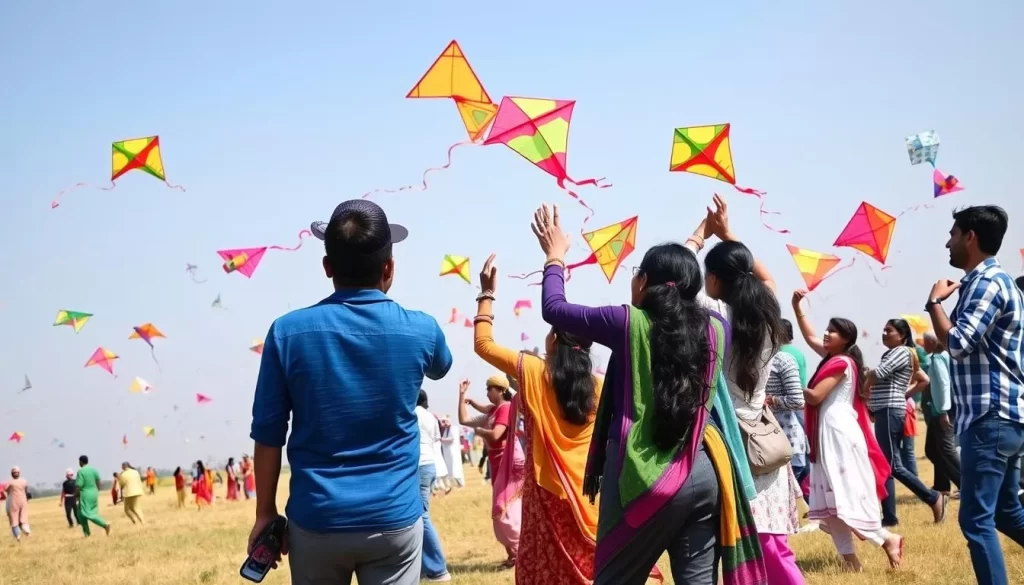
As the sun transitions into Capricorn, Maharashtra comes alive with the vibrant celebration of Makar Sankranti. This harvest festival marks the end of winter and the beginning of longer days, typically observed on January 14th or 15th each year. You’ll experience the joyous atmosphere as people of all ages come together to celebrate.
Kite Flying and Sweet Exchanges
The skies of Maharashtra are filled with colorful kites during Makar Sankranti, as people engage in friendly competitions, trying to cut each other’s kite strings. This kite flying tradition is a significant part of the festival, symbolizing the victory of good over evil. The sweet exchanges of til-gul (sesame and jaggery sweets) accompanied by the saying “Til-gul ghya, god god bola” encourage you to leave behind old conflicts and start fresh relationships.
Regional Variations Across Maharashtra
Different regions of Maharashtra have unique variations of the Makar Sankranti celebration. Coastal areas emphasize seafood feasts, while rural regions focus on cattle worship and agricultural rituals. In the Konkan region, special dishes like puran poli and gulachi poli are prepared, whereas in Vidarbha, people exchange halwa and participate in community bonfires, showcasing the diversity of this festival.
Janmashtami: Celebrating Lord Krishna’s Birth
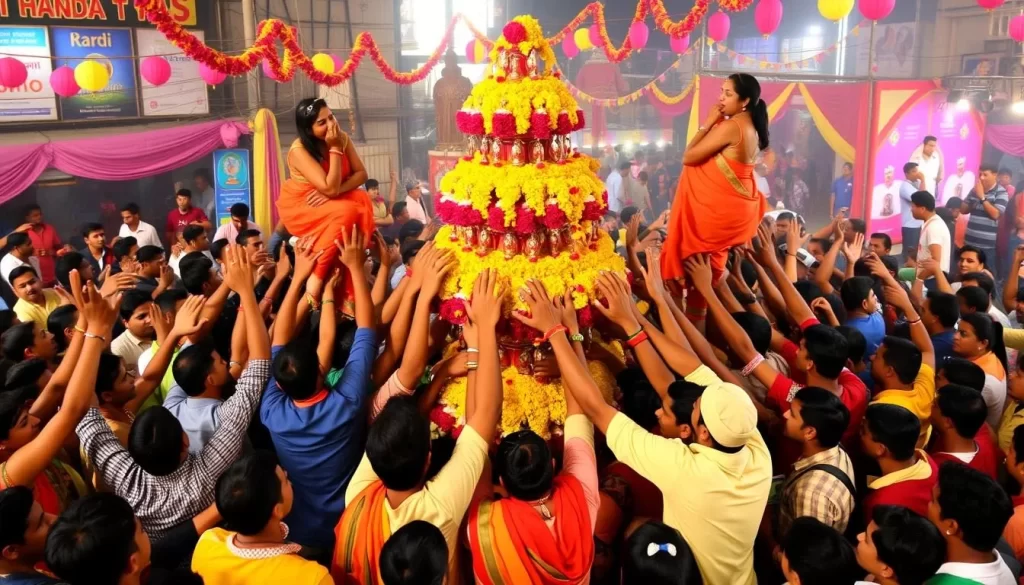
In Maharashtra, the celebration of Janmashtami is a vibrant expression of devotion and joy. This significant festival commemorates the birth of Lord Krishna, a revered figure in Hinduism.
The Spectacular Dahi Handi Competitions
The highlight of Janmashtami is the Dahi Handi event, where teams called “Govindas” form human pyramids to break a clay pot filled with curd, butter, and honey. This reenacts Lord Krishna’s childhood pranks of stealing butter, making it a thrilling celebration that attracts thousands.
Where to Witness the Human Pyramids
Mumbai’s neighborhoods like Dadar, Worli, and Ghatkopar host some of the most competitive Dahi Handi events, featuring pyramids that reach impressive heights. For a more intimate experience, consider visiting Pune or smaller towns in Maharashtra, where you can witness traditional Dahi Handi festival celebrations.
To make the most of your experience, arrive early to secure a good spot, and be prepared for large crowds. You can also enjoy the devotional songs and beautifully decorated temples throughout the night, as devotees stay awake to honor Lord Krishna‘s birth at midnight.
Ellora and Ajanta Festival: Art and Heritage
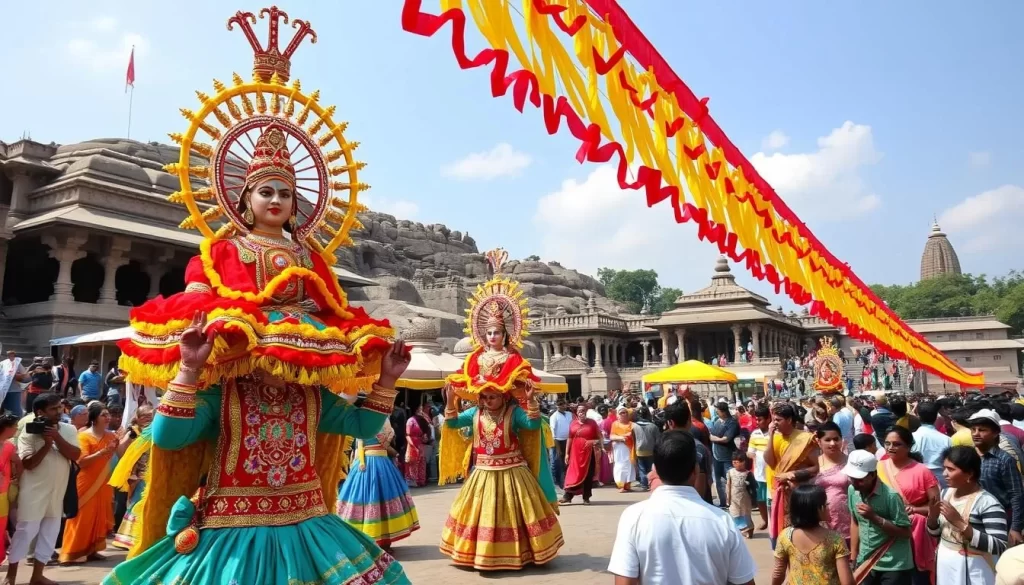
The Ellora and Ajanta Festival transforms Maharashtra’s most precious UNESCO World Heritage Sites into living stages for cultural performances, typically held annually in the cooler months between November and March.
Cultural Performances Against Historical Backdrops
You’ll experience the magical combination of ancient architecture and contemporary artistic expression as classical dance performances, music concerts, and theatrical productions take place against the backdrop of 2,000-year-old cave temples, creating a unique historical backdrop.
The festival showcases India’s classical performing arts traditions, including Bharatanatyam, Kathak, Odissi dance forms, and Hindustani classical music, performed by nationally renowned artists.
Planning Your Visit to the Festival
When planning your visit to this festival, book accommodation well in advance in nearby Aurangabad, as options close to the caves are limited and fill quickly during the festival period.
Consider hiring a local guide who specializes in both the historical significance of the caves and the cultural context of the performances, enhancing your appreciation of this unique place.
Kala Ghoda Arts Festival: Urban Cultural Extravaganza
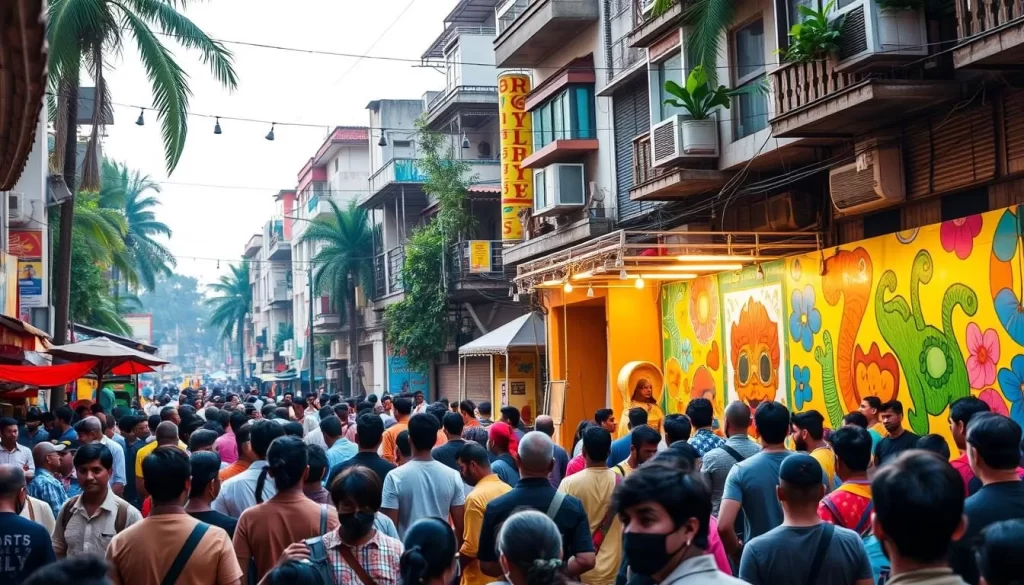
The Kala Ghoda Arts Festival transforms South Mumbai into a cultural hub each February. This nine-day celebration is a spectacular display of art, music, and literature, making it a must-visit event for anyone interested in cultural experiences.
Art, Music, and Literature in the Heart of Mumbai
The festival brings together various artistic expressions, from visual arts and dance to music, theater, and literature. You can enjoy hundreds of events across multiple venues, including heritage buildings, galleries, and museums, creating an immersive cultural experience in the heart of Mumbai.
Must-See Exhibitions and Performances
Music lovers will appreciate the diverse lineup, ranging from classical Indian performances to contemporary fusion, jazz, and folk music. Don’t miss the stunning installation art that transforms the streetscape, with massive sculptures and interactive exhibits. For literature enthusiasts, the festival offers book launches, poetry readings, and panel discussions with renowned authors.
Local and Lesser-Known Festivals
Maharashtra’s diverse cultural heritage is perhaps best showcased through its local and lesser-known festivals, which are steeped in tradition and community spirit. While the state’s major celebrations are well-documented, there are numerous hidden gems waiting to be discovered by intrepid travelers.
Tribal Festivals of Rural Maharashtra
In the tribal regions of Palghar, Nashik, and Gadchiroli, you can experience unique tribal festivals like Bhagoria, a pre-harvest celebration, and Shimga, a local version of Holi. These festivals maintain ancient traditions dating back centuries and feature distinctive music played on traditional instruments like the tarpa and dhol, accompanied by spirited dance forms.
Community Celebrations Off the Tourist Trail
Beyond the tribal festivals, community celebrations in rural Maharashtra offer a glimpse into the state’s rich cultural tapestry. For instance, the Warli tribe’s harvest festivals in the Thane district showcase their famous painting style through community art-making. You can also witness Narali Purnima, a colorful ceremony where fishing communities offer coconuts to the sea and decorate their boats in places like Malvan and Vengurla.
| Festival | Location | Description |
|---|---|---|
| Bhagoria | Palghar, Nashik, Gadchiroli | Pre-harvest celebration with traditional music and dance |
| Shimga | Tribal regions | Local version of Holi with ancient traditions |
| Narali Purnima | Coastal Maharashtra (Malvan, Vengurla) | Coconut Full Moon ceremony by fishing communities |
To experience these authentic community celebrations in rural Maharashtra, consider connecting with local guides or responsible tourism organizations. They can help you visit respectfully during these community events, providing a unique and enriching experience.
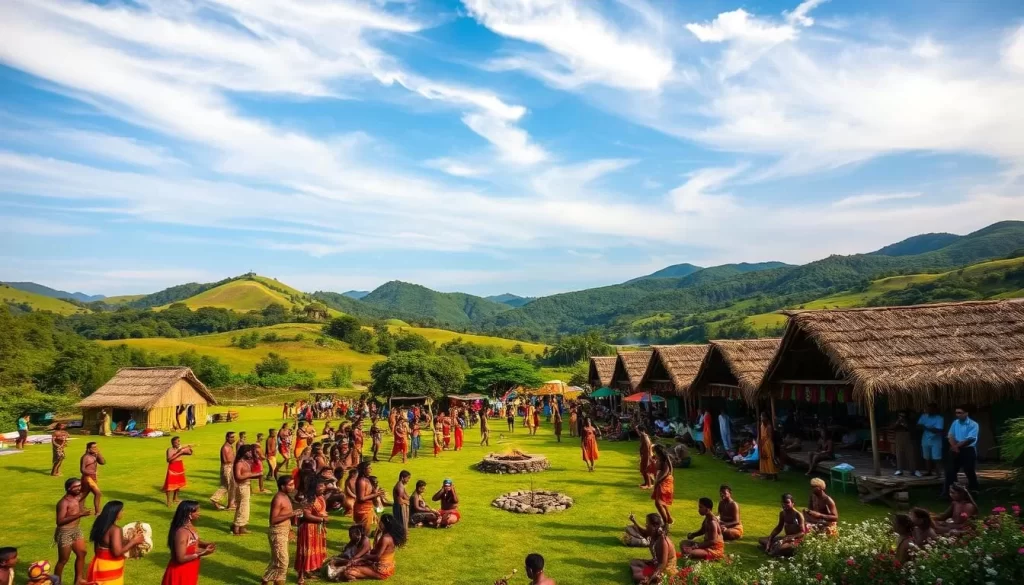
Festival Foods of Maharashtra
Festivals in Maharashtra are a treat for your senses, with the food playing a central role in the celebrations, offering a variety of traditional sweets and seasonal delicacies. The state’s vibrant festivals are as much about the food as they are about the celebrations, with special dishes that are prepared only during these times.
Seasonal Delicacies and Traditional Sweets
During Ganesh Chaturthi, you must try modak—Lord Ganesha’s favorite sweet—steamed rice flour dumplings filled with coconut and jaggery. Diwali brings an explosion of sweet and savory treats, including chakli (spiral-shaped crispy snacks), anarse (rice and jaggery cookies), and karanji (crescent-shaped pastries filled with coconut and nuts).
For Gudi Padwa, seek out puran poli (sweet flatbread stuffed with chana dal and jaggery) and shrikhand (strained yogurt sweetened with sugar and flavored with saffron and cardamom), which symbolize the sweetness of the new year. During Makar Sankranti, you’ll find til-gul ladoo (sesame and jaggery sweets) being exchanged among friends and family.
Where to Sample Authentic Festival Cuisine
For the most authentic festival food experiences, head to residential neighborhoods rather than tourist areas. Places like Dadar, Girgaon, and Lalbaug in Mumbai or Sadashiv Peth and Narayan Peth in Pune offer traditional sweet shops that have been preparing festival specialties for generations.
Many restaurants offer special food menus during major celebrations, but for the most authentic experience, look for community food festivals often held in public grounds during Ganesh Chaturthi or Navratri, where local home cooks showcase their specialties.
Planning Your Festival Visit
As you plan your trip to Maharashtra during the festival season, it’s essential to be prepared for the crowds and excitement that come with it. Maharashtra’s festivals are a major attraction, and with some advance planning, you can have a truly unforgettable experience.
Accommodation Tips During Festival Season
Booking your accommodations well in advance is crucial, especially for major celebrations like Ganesh Chaturthi and Diwali. Prices surge and availability becomes limited during these times.
- Book your accommodations at least 3-4 months in advance, particularly in cities like Mumbai and Pune.
- Consider staying in neighborhoods close to festival activities, such as Bandra or Andheri in Mumbai.
- Many hotels offer special festival packages that include guided tours and traditional meals.
Transportation and Crowd Management
Navigating the crowds during festival processions can be challenging, but there are ways to make it more manageable.
- Public transportation becomes extremely crowded, so consider hiring a private driver or using ride-sharing apps.
- Join a guided tour to find the best viewing spots and stay safe during crowded events like Ganesh Visarjan.
- Dress appropriately for the weather and cultural context, and be prepared for potential rain during monsoon-season festivals.
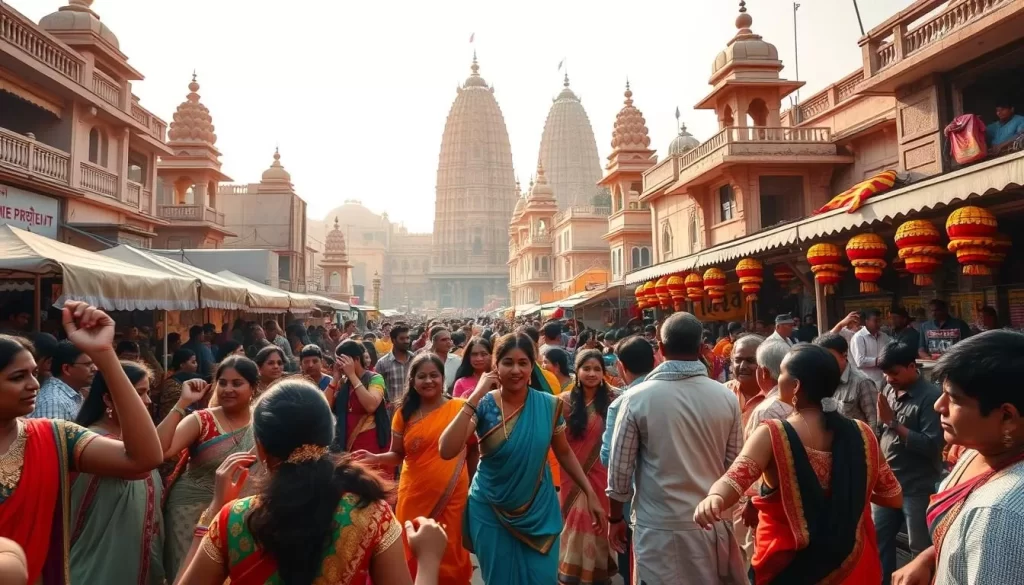
Cultural Etiquette for Festival Visitors
The key to a memorable and respectful festival experience in Maharashtra lies in understanding and adhering to local cultural etiquette. As you participate in the vibrant celebrations, being mindful of the customs and practices will not only enhance your experience but also earn you the warmth of the local communities.
Respectful Participation in Religious Ceremonies
When visiting temples or religious sites during religious ceremonies, it’s crucial to show respect. Remove your shoes before entering, avoid pointing your feet toward deities or people, and accept prasad (blessed food offerings) with your right hand. Always ask permission before photographing religious ceremonies, as some moments or temple interiors may be off-limits to cameras.
Dress Codes and Behavior Guidelines
Dressing modestly is advised when attending religious festival events, with shoulders and knees covered for both men and women. For women, carrying a scarf to cover their heads when entering certain religious spaces is a sign of respect. Be mindful of your behavior guidelines during ceremonies; maintain a respectful silence during prayers and follow the lead of locals. Additionally, adhering to local dress codes will make your experience more enjoyable and respectful.
Conclusion: Embracing Maharashtra’s Festive Spirit
The essence of Maharashtra is captured in its festivals, which are a must-experience for any visitor. By participating in these vibrant celebrations, you’ll gain a deeper understanding of the state’s rich cultural heritage.
Maharashtra’s festive spirit is infectious, breaking down barriers between visitors and locals as you share in the joy, devotion, and community feeling that these festivals inspire. Whether you’re joining thousands in Mumbai’s Ganesh processions or watching a classical dance performance against the backdrop of ancient caves, the memories you’ll create will stay with you long after your return home.
As Abbas Slatewala, Co-Founder of India Someday Travels, notes, “India’s festivals are a spectacular way to experience the country’s vibrant culture and traditions.” By timing your visit to coincide with one or more of Maharashtra’s festivals, you’ll transform your travel experience from simply observing the state to actively participating in its living cultural heritage.
Even if you can only experience one festival during your visit, the insights you’ll gain into Maharashtra’s cultural values, religious beliefs, and community bonds will enrich your understanding of this fascinating region of India.
The above is subject to change.
Check back often to TRAVEL.COM for the latest travel tips and deals.
